11 Easy Tips for Growing Potatoes in Pots
Growing potatoes in containers is a fantastic way to enjoy homegrown produce, especially if you’re limited on space. Whether you have a small balcony, patio, or even just a backyard, containers offer a convenient solution for cultivating this versatile vegetable. With the right techniques and care, you can grow healthy, delicious potatoes right at home. From choosing the best container to maintaining the ideal growing conditions, there are simple steps you can take to ensure a successful harvest.
This post may contain affiliate links, which helps keep this content free. Please read our disclosure for more info.
Choose the Right Container Size
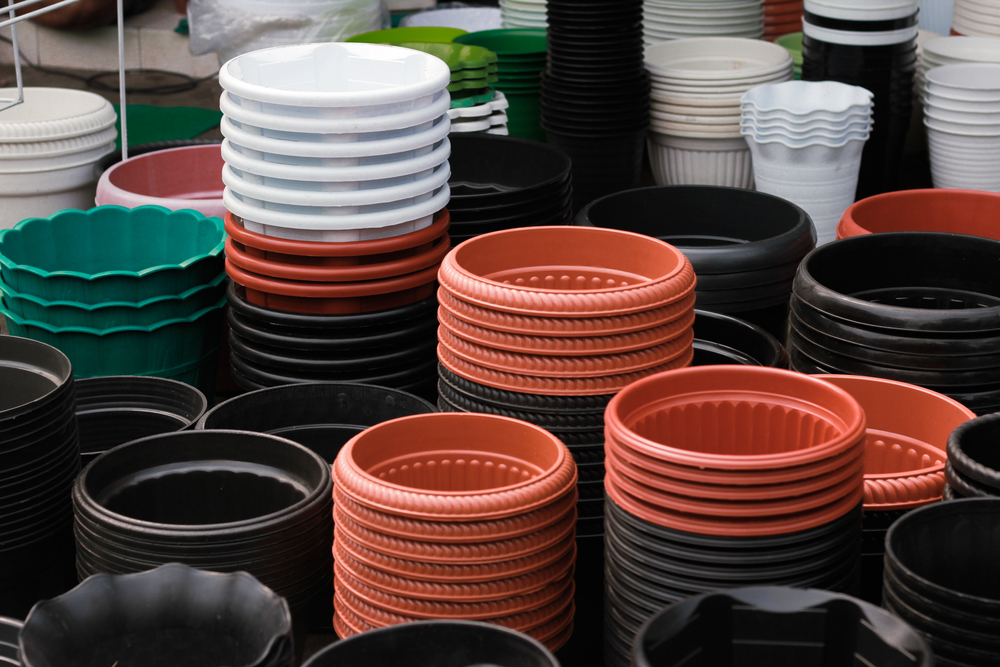
When growing potatoes in containers, the size of the container plays a vital role in ensuring a successful harvest. Ideally, choose a container that holds at least 15 gallons of soil. Larger containers give potatoes the room they need to develop a strong root system and produce more tubers. If the container is too small, the potatoes will become cramped, which can result in stunted growth and a lower yield.
It is also important to ensure the container is tall enough to allow for proper mounding. Potatoes grow by sprouting new tubers along the buried stems, and you need enough space to add soil as the plants grow taller. A container with a height of at least 18 to 24 inches will allow you to gradually add soil or compost, encouraging more tuber production and maximizing your harvest.
Use High-Quality Soil
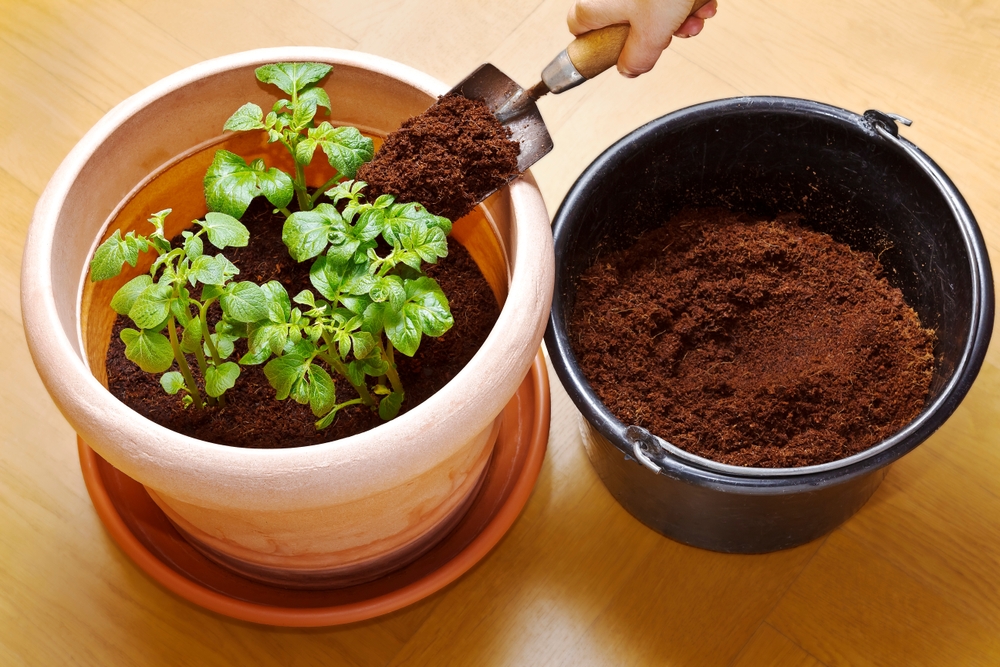
Potatoes need loose, well-drained soil that is rich in organic matter. Using high-quality soil for container gardening ensures that the roots can spread out and access nutrients while avoiding waterlogging. A good soil mix will retain moisture but also allow excess water to drain away, preventing the roots from sitting in stagnant water, which can lead to rot.
Make a soil mix with compost, perlite, and peat moss for the best results. The compost will provide nutrients, while perlite and peat moss improve the soil’s texture, making it light and fluffy. It’s essential to avoid using regular garden soil in containers, as it can compact and limit airflow to the roots. The right mix will give your potatoes the best chance for a healthy, productive growing season.
Select the Right Potato Variety
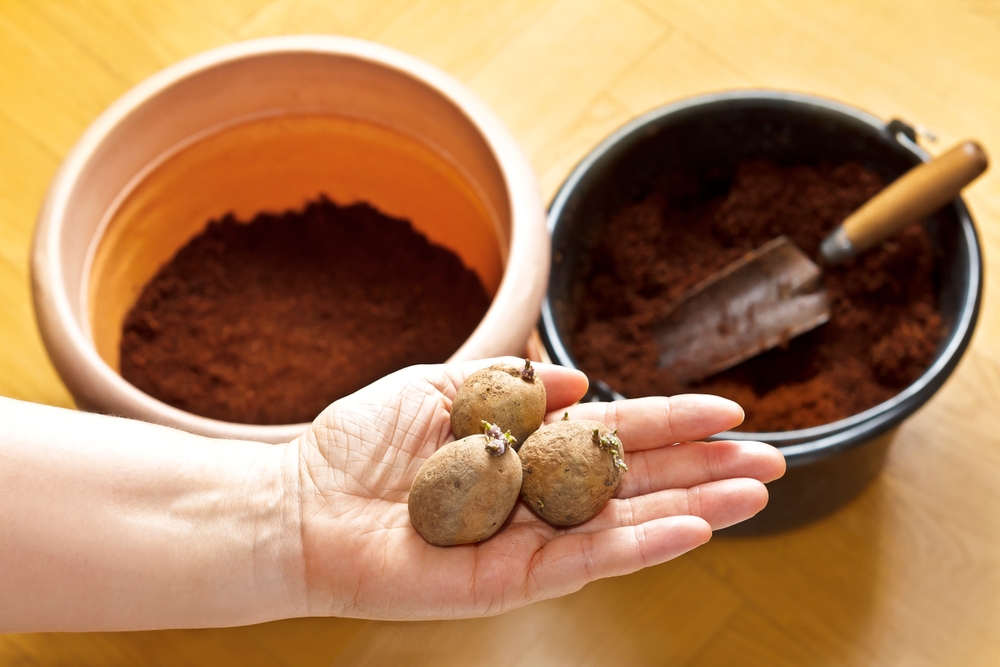
The type of potato you choose will determine how well it grows in a container. Some varieties are better suited for container gardening due to their compact size and early harvest. Varieties like Yukon Gold, Red Pontiac, and New Potatoes are ideal for containers because they are smaller, more manageable, and mature faster than larger types.
Early-maturing potatoes are perfect for container growing because they don’t require as long a growing period. This is especially beneficial for gardeners with limited space or shorter growing seasons. Selecting the right variety helps ensure that your potatoes have enough time to mature in the container and produce a bountiful crop.
Start with Seed Potatoes
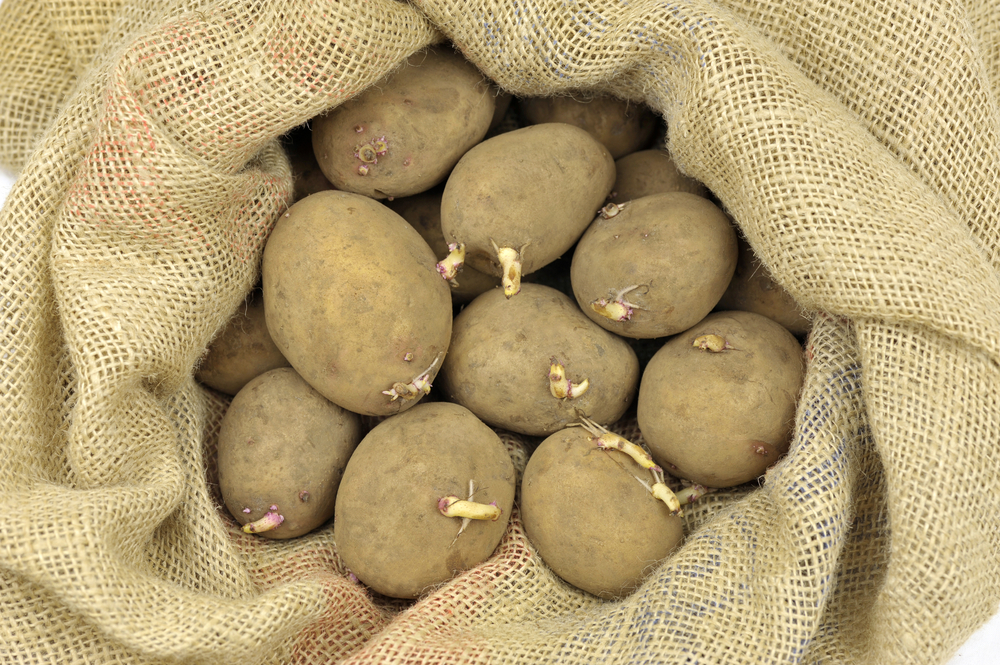
Starting your potato garden with seed potatoes, rather than regular store-bought potatoes, is the best practice. Seed potatoes are specifically grown for planting and are free from diseases and pests that might be found in store-bought potatoes. Cutting your seed potatoes into smaller pieces is also a good idea, as long as each piece has at least one “eye” (a small bud from which new growth will sprout).
Once the seed potatoes have been prepared, place them in a warm, dry area for a few days to allow the cuts to callous over. This helps prevent rot and disease from spreading. Starting with healthy, disease-free seed potatoes ensures that your plants will grow strong and produce an abundant harvest.
Ensure Proper Drainage
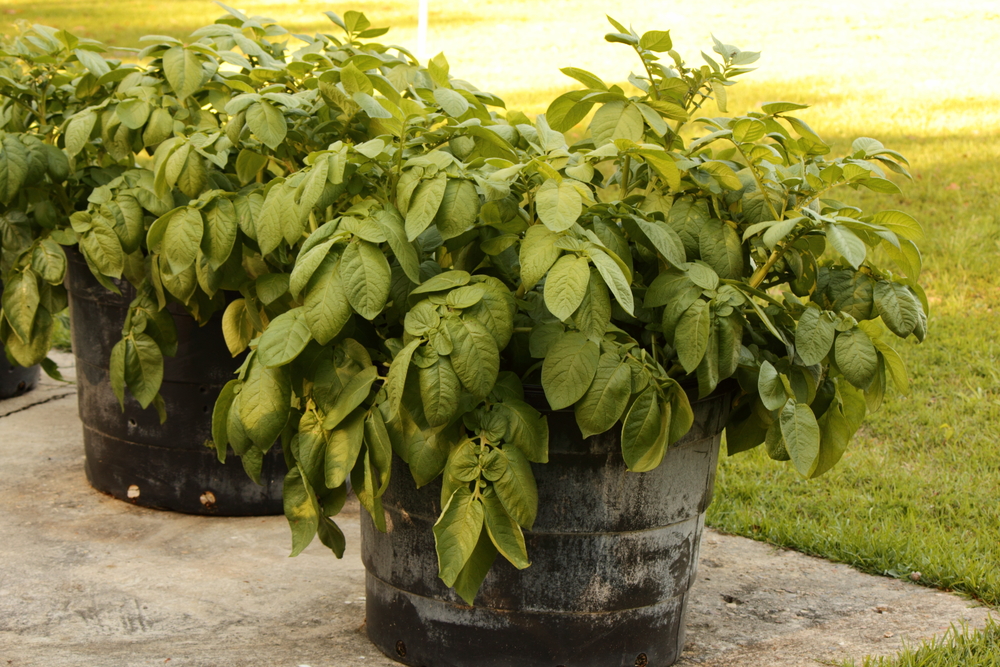
Good drainage is essential when growing potatoes in containers. Without it, water can accumulate and saturate the soil, leading to root rot and other issues. To ensure proper drainage, make sure the container has several drainage holes at the bottom. You can also place a layer of gravel or small stones at the bottom of the container before adding soil to enhance drainage.
While watering, check that the excess water drains out of the container. If you notice that water is pooling on top of the soil or that the soil stays wet for too long, you may need to adjust the amount of water or improve drainage. Proper drainage helps maintain healthy root systems and keeps your potatoes thriving.
Provide Enough Sunlight
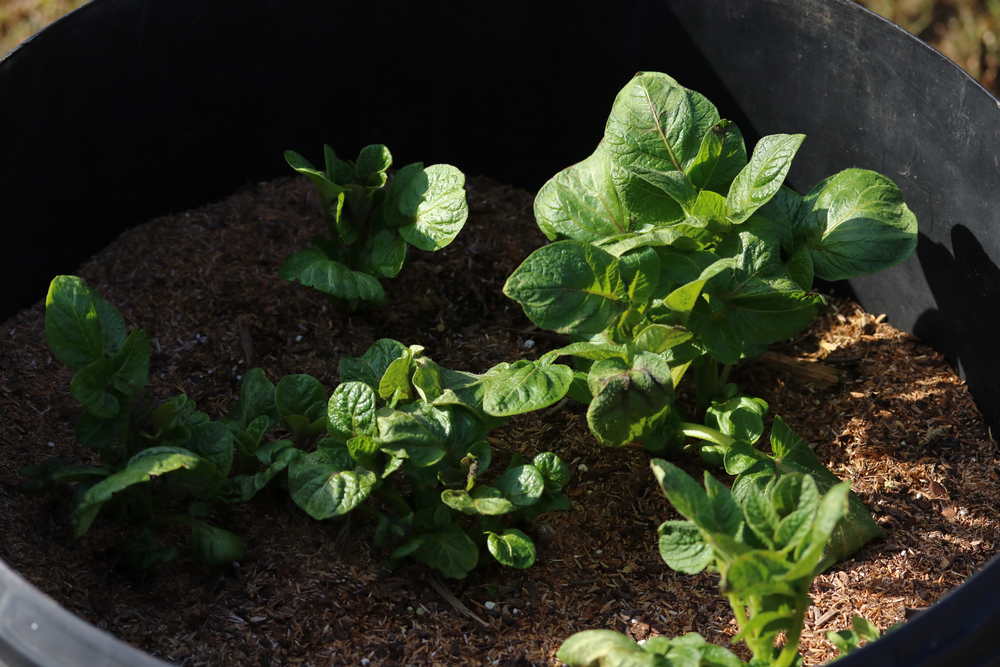
Potatoes require plenty of sunlight to grow properly. Ideally, the container should be placed in a location that receives at least 6-8 hours of direct sunlight per day. Sunlight is essential for photosynthesis, which helps the potato plant grow strong and healthy. Without enough sunlight, the plant will become weak, and the tubers may not develop properly.
If you are growing potatoes in a container on a balcony or patio, try to position the container in a sunny spot. If you live in a region with limited sunlight or short days, consider using reflective materials or grow lights to increase the amount of light your plants receive.
Water Consistently
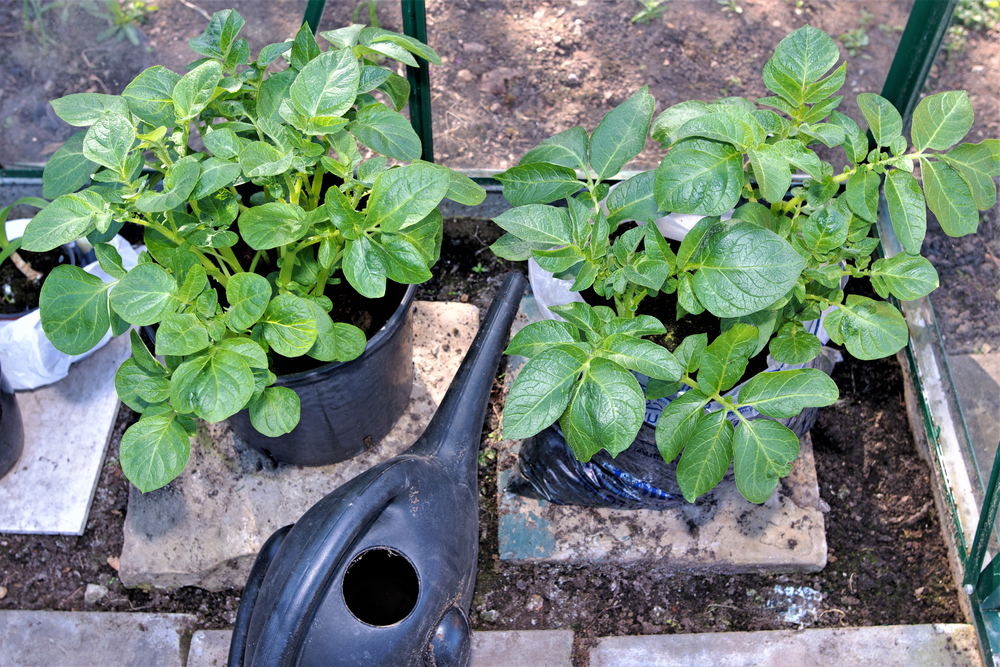
Maintaining consistent moisture is key to growing potatoes in containers. Potatoes need regular watering, especially when they are actively growing and forming tubers. The soil should be kept moist but not soggy. Overwatering can lead to root rot, while underwatering can stunt the growth of the plants and reduce the size of the potatoes.
Water your container potatoes thoroughly until water drains from the bottom. During hot weather, you may need to water more frequently. However, always check the soil before watering to ensure it is dry to the touch. A consistent watering routine will encourage healthy growth and ensure your potatoes get the hydration they need.
Add Soil as Plants Grow
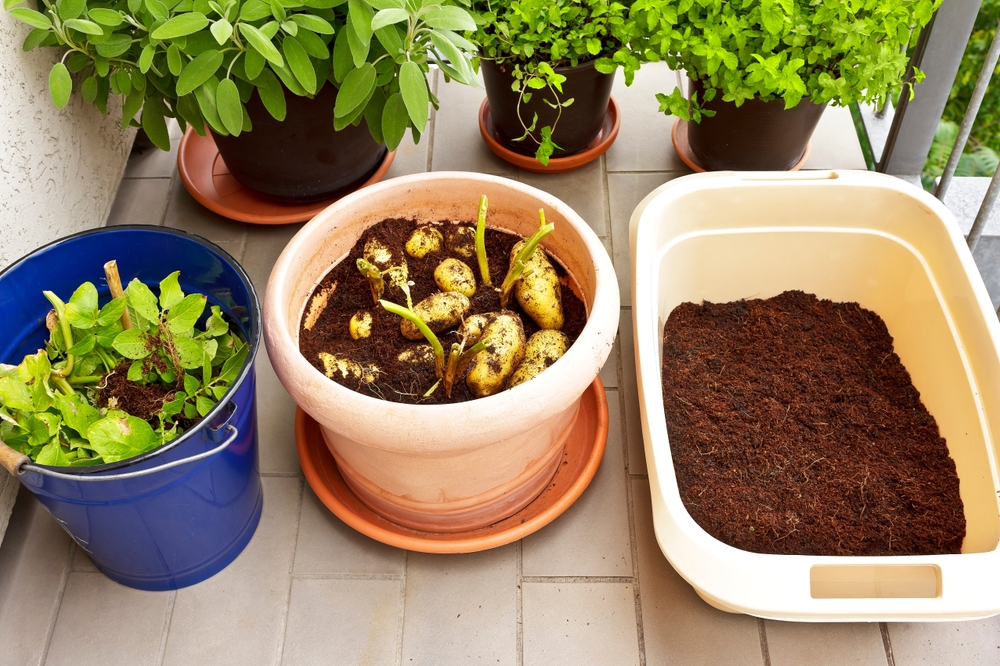
As the potato plants grow, you will need to mound soil around the base of the plant. This process, known as “hilling,” helps encourage more tuber formation along the buried stems. Start adding soil when the plant reaches about 6 inches tall. Continue adding soil or compost gradually as the plant grows, ensuring that the stems remain covered.
Mounding the soil not only encourages more potatoes to form but also helps protect the developing tubers from sunlight. Potatoes exposed to sunlight can turn green and become inedible due to the presence of solanine, a toxic compound. By regularly adding soil, you protect the tubers and create a healthy environment for them to grow.
Fertilize as Needed
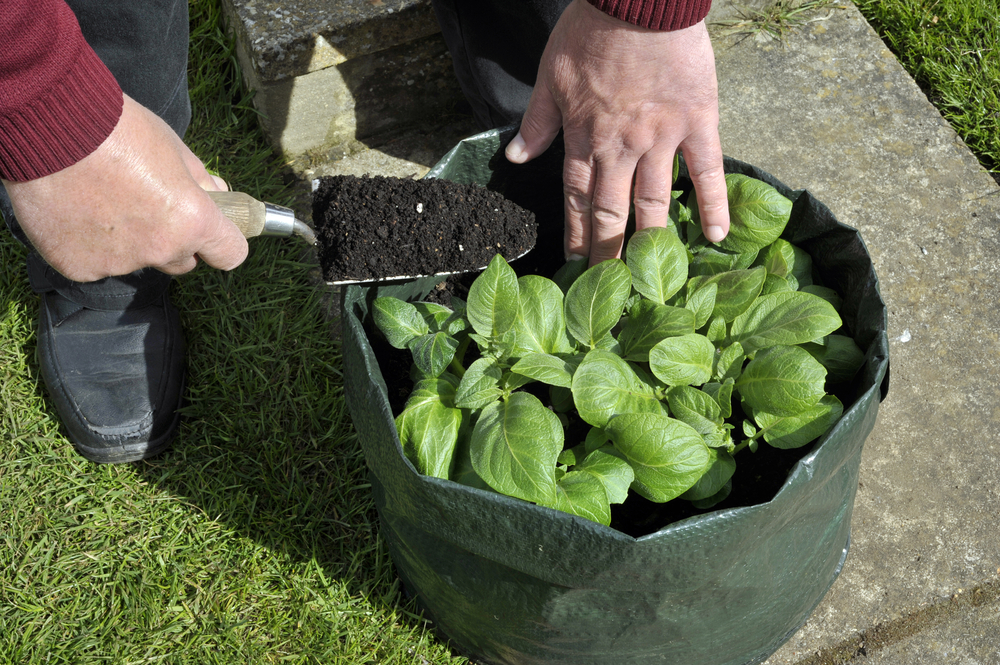
While potatoes are not heavy feeders, they do benefit from regular fertilization to encourage healthy growth. Use a balanced, slow-release fertilizer or an organic option like compost to provide essential nutrients throughout the growing season. Potatoes need nitrogen, phosphorus, and potassium, so a balanced fertilizer will help meet their needs.
Be careful not to over-fertilize, as too much nitrogen can cause the plants to grow large and leafy at the expense of tuber production. Apply fertilizer in the early stages of growth and once or twice during the growing season. Fertilizing correctly will ensure that your plants get the nutrients they need to grow strong and produce plenty of potatoes.
Maintain Optimal Temperature
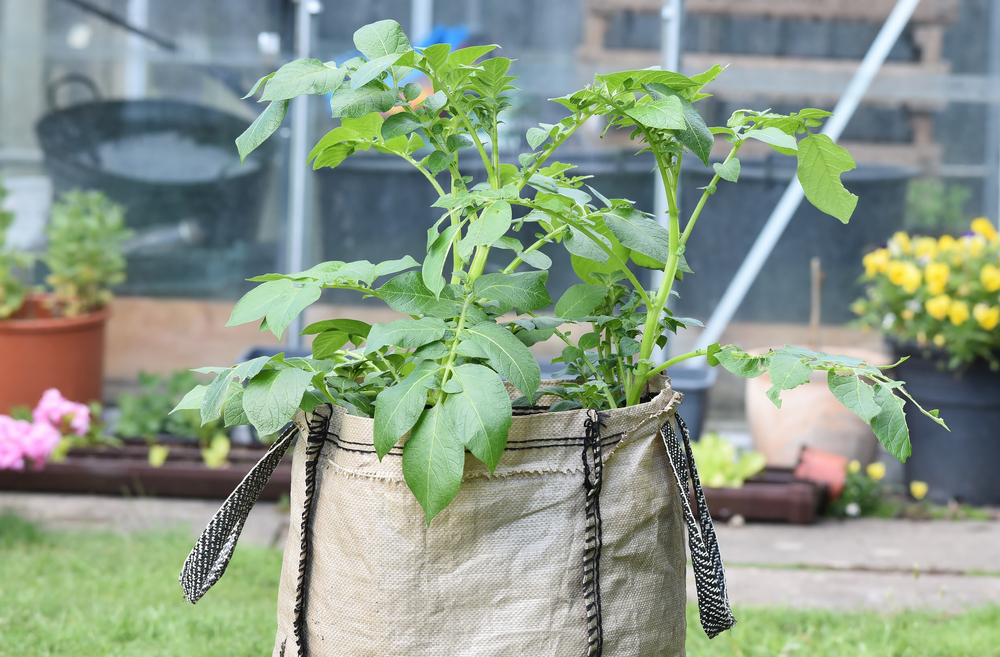
Potatoes grow best in cool to moderate temperatures, ideally between 60°F and 70°F (15°C to 21°C). Extreme heat can cause the plants to wilt and stunt their growth, while temperatures below freezing can kill the plants. If you live in a hot climate, consider placing your container in a spot with some afternoon shade or using shade cloth to protect the plants during the hottest part of the day.
In colder climates, you may need to bring the container indoors or use a cold frame to provide some extra warmth. Maintaining an optimal temperature range ensures that the plants grow at their best, producing healthy, large potatoes.
Watch for Pests and Diseases
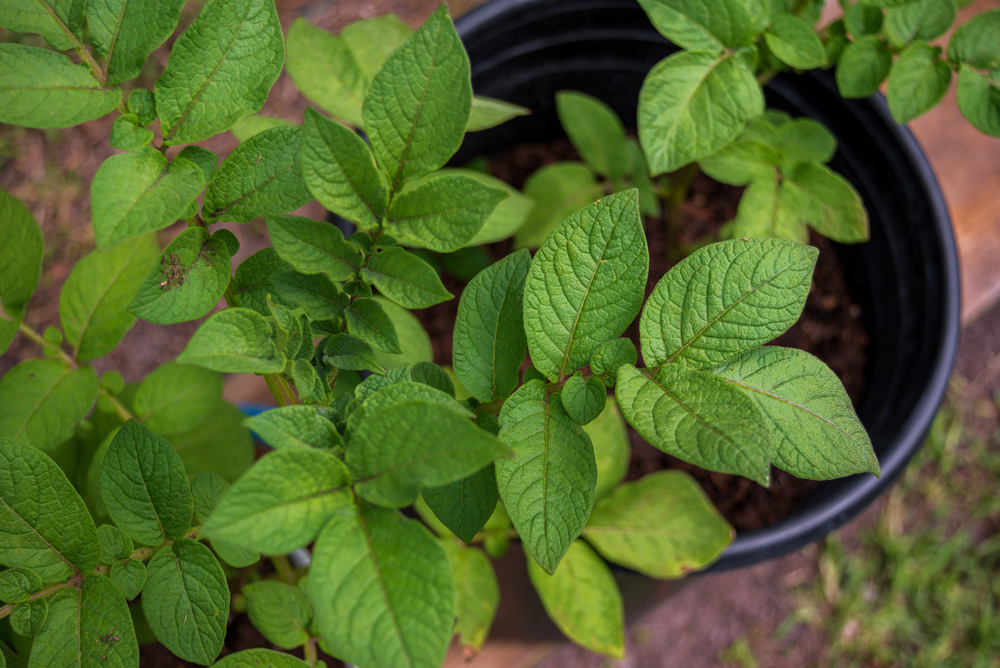
While potatoes in containers are less prone to certain pests and diseases compared to those grown in the ground, they can still be affected by insects like aphids, slugs, and Colorado potato beetles. Regularly check your plants for signs of pest infestations and take action quickly if you spot any problems. Hand-pick pests off the plants or use organic pest control methods like neem oil or insecticidal soap.
Additionally, make sure the soil remains well-drained to avoid water-related diseases like blight. Proper care, like ensuring good airflow around the plants and maintaining the right soil moisture, will also help minimize disease risks.
This article originally appeared on Avocadu.
